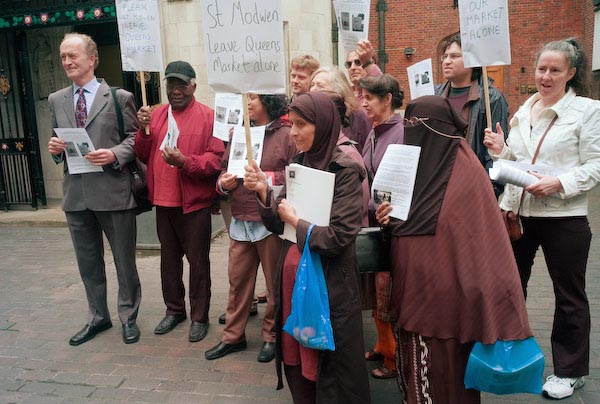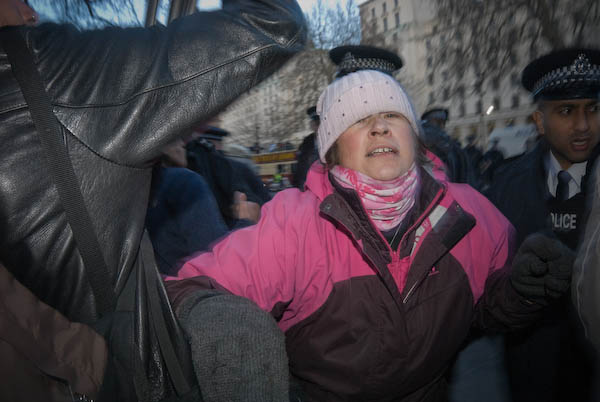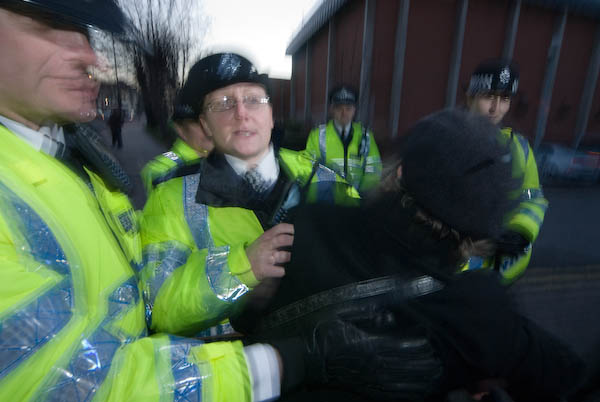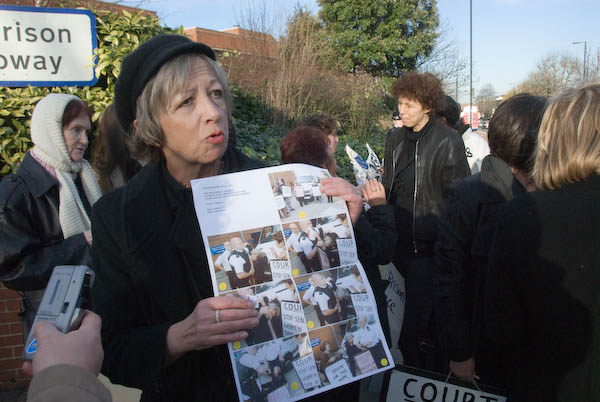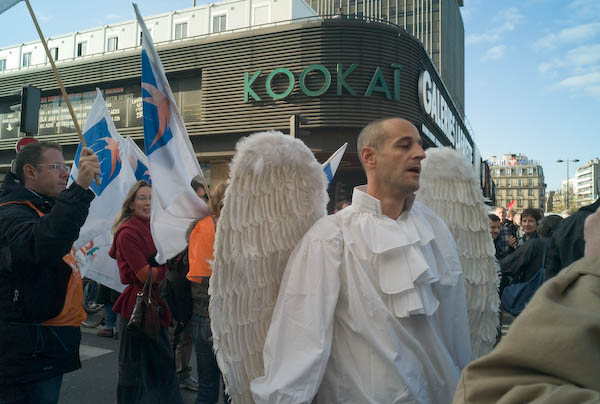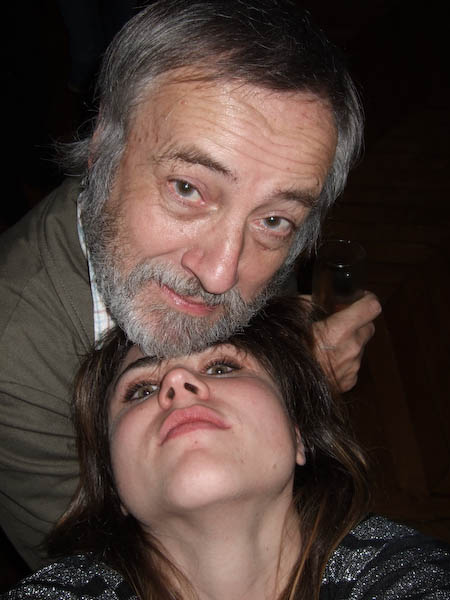So often I come across something on the web and think who are these people write such nonsense. So I wasn’t surprised to find a piece on lens cleaning, written by a person described as a “successful author” which didn’t really offer a great deal of sensible advice for the practical photographer. But it did make me want to write more about the subject. Below you’ll find sections on Lens Handling, Lens Changing and Cleaning Lenses, all vital parts of the photographic process for the practical photographer.
When shooting with digital, I’ve had – or at least noticed – more problems with dirty lenses. Perhaps it is the shorter focal lengths of DX format cameras that make the defects more visible, or just the fact that now I view every image at around 15×10 inches on a high quality computer monitor makes minor defects jump out.
Digital has in some respects led to us demanding more, although I think this is only part of a changing attitude. Looking at an original Edward Weston image in a show a while ago, I was shocked by the number blemishes in this otherwise superb contact print. Even when printing from film, I would have taken a spotting-brush and dye to the more prominent of the largely white dust spots. Photoshop and other software of course makes this require considerably less skill – and in particular allows us to correct any mistakes we make.
Spots on digital images come from dirt on the sensor rather than the lens, but muck there can lead to unsharp areas, diffuse darker regions and excessive diffusion from highlights – more serious problems that can be hard or impossible to correct, as well as lower overall contrast.
We need to get into good habits of lens handling – particularly when using interchangeable lenses – to avoid getting lenses dirty, as well as learning good methods and practices to clean them once they are dirty.
Lens Handling
- always keep rear lens caps on lenses when not on camera;
- always use a UV or similar filter on the front of lenses where this is possible;
- for lenses with protruding front elements, use a suitable lens cap when not in use;
- inspect front and rear elements of all lenses for dirt before every photographic session;
- practice lens-changing and adopt a simple, effective procedure (see below);
- always check and clean immediately if necessary when you think you may have put a finger on a glass surface.
- if possible, use a lens hood – its most important job is keeping fingers etc away from the glass;
Lens Changing
A sensible and consistent lens-changing procedure can save time and reduce the amount of dust reaching the sensor as well as making dirt and fingermarks on lens surfaces less likely. It helps if all lenses, cameras and rear lens caps have clear markings for lining them up – and if necessary it can be worth adding these – or making them clearer – with a paintbrush and a small dab of paint (or nail varnish or correcting fluid etc.)
Exactly how you do this will depend on your camera and working conditions. I use cameras that allow easy one-handed removal and insertion of lenses when the camera is on a strap around my neck (Nikon and Leica.) Here is how I do it on the Nikon:
- Put front lens cap on camera lens (most lenses I don’t use one.)
- Switch camera off (Nikon says so, but to be honest I don’t usually bother)
- Take new lens from bag with left hand, align its marker correctly to fit the camera, remove rear lens cap with right hand and hold it in right palm with little third and little finger.
- Grab the lens on camera with my right hand. The second finger can press the lens release button while you hold the lens to remove it. With practice you don’t drop the rear lens cap!
- Move the new lens in your left had into position, insert and twist to lock.
- Use your left hand to put the rear cap on the lens you’ve just removed; if you use a front cap, replace that, and put the lens away.
- Remove any lens cap from the lens on camera, store suitably (those I have live in the compartment in the bag for the lens when not on them.)
- Inspect front lens (or filter) surface for dirt, clean if needed. If you switched the camera off, you now need to switch it on.
It seems complex when you write it down, but is really fast and simple to do with a little practice. If you are not using your camera on a neck-strap, you really need to find a suitable clean surface on which to rest camera and lenses during changes – if I’m carrying my bag, the open bag will do.
Of course the fastest and cleanest way to change lenses is not to change lenses, but to have each on a separate body. I often worked this way with film and a couple of SLR or rangefinder bodies. But the digital SLR bodies I’ve used are a bit larger and I find it too encumbering to have a pair in use.
Lens Cleaning
Rule 1 is don’t – unless you have to. But be paranoid about checking they are clean.
Lens cleaning should always be a two-stage process:
Stage 1: remove any loose dirt or grit;
Suitable tools include a rubber bulb blower and brushes.
If you use brushes you must ensure they are kept clean and particularly they are free from grease – some retract into a plastic cover, others can be kept in a resealable plastic bag or box. Brush lightly holding the lens so dust will fall down away from it.
If you have nothing else with you, a good strong blow is better than nothing; you will get some spit on the lens, but this will (and must) be removed in the next stage.
This stage is vital, as any grit left in place can damage the lens surface in the next step.
Stage 2: remove grease and other adhering dirt;
Camera stores sell microfibre lens cleaning cloths, together with various liquid lens cleaners.
You can also use a ‘Lens Pen‘ which incorporates a brush for stage 1 cleaning and a chamois pad with graphite for stage 2.
Keep cleaning cloths in a resealable plastic bag or box. Normally you should put one or two drops of cleaner on to a part of the cloth, then wipe the lens gently. Then remove cleaner and dirt with a dry part of the cloth. Never put more than a single drop of cleaner on a lens – they can run down and get inside lenses, possibly dissolving glues and greases, damaging the lenses and also putting dirty on interior surfaces.
Lens Pens are effective and very convenient when on the move, but need replacing perhaps every six months or more frequently if you use them much. Normally you need to breath on the lens before using the pen. (Be warned, there are imitations of the original Lens Pen some of which may be ineffectual or even harmful.)
If you have nothing else with you, any clean soft cloth is better than nothing. Many of my shirts usually fall into this category!
Other Cleaning Methods
Rain Drops are not something I recommend for cleaning lenses, but another hazard on your lenses when taking pictures. I carry a large microfibre cloth, sold cheaply for general cleaning in a ‘pound store’, about 12″ square, for gently mopping the lens. Again it has a plastic bag to keep it clean when not in use.
Or you can be like Martin Parr in ‘Dirty Weather‘ and just enjoy the distorting effect of the drops. Unfortunately it’s less likely that any clients will love it. Unless you are Martin Parr.
Spring Clean: Although not really suitable for routine cleaning, products such as Opti-Clean are remarkable for restoring lenses to an ‘as-new’ state. This is a liquid that you paint onto the lens, letting it run down and cover the surface. It rapidly dries to form a polymer coat that can then be peeled off, taking the dirt with it.
Opti-clean must never be used on plastic lenses, and you also should avoid it coming into contact with the plastic parts of some lens bodies.
